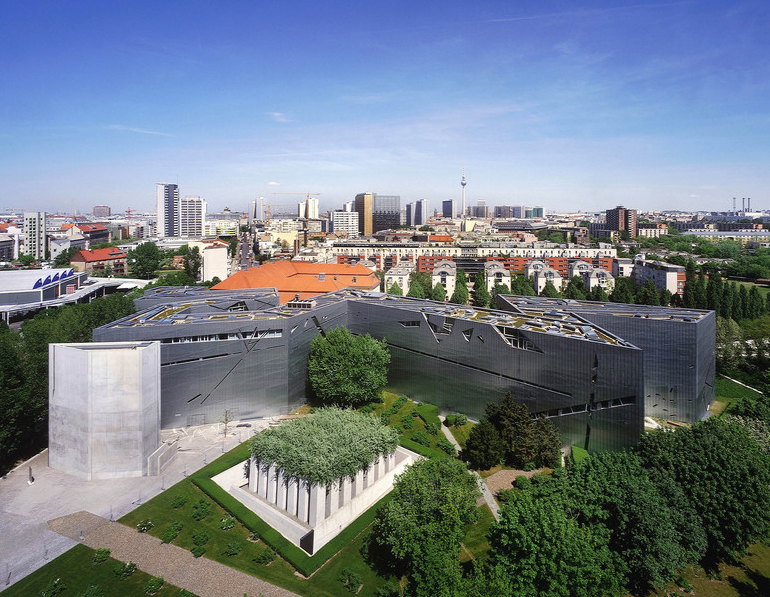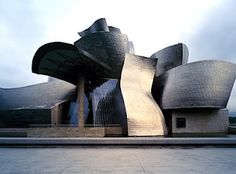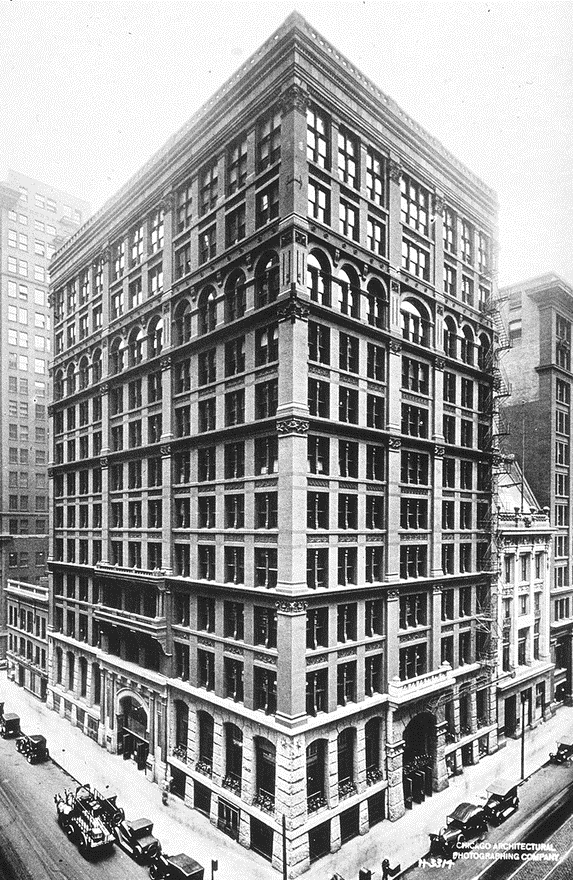Introduction
The outstanding achievements in architecture were the results of the work of pioneers who made significant contributions to the science of architecture. However, it was the patronage of the new-states and the investments by wealthy merchants facilitated the works of different architects as the science evolved through modernism, deconstructivism, and postmodernism (Roth & Clark 2013). Because of the pioneers’ contributions to the science, the changes that have been introduced in the field have made significant revolutions to occur that depend on the country where the science in applied and the context of application (Ching 2010).
Pioneers of Architecture
Researchers including Heynen (2000) agree that architecture as it is known today is a science that has evolved through many phases depending on the work of pioneer architects who skillfully introduced the new principles on which new architectural pieces of work were developed. Here, contributions are classified into postmodernism and deconstructivism, depending on the time when they were made. According to Carpo (2013), postmodernism was an architectural style that was introduced as an international style in the 1950s, which later matured into a movement in 1970 (Dogan & Nersessian 2012)
Postmodernism
Modern architecture has significantly benefited from the contributions of pioneers such as Michael Graves and David Linked in their outstanding pieces of work. Carpo (2013) maintains that the architects figured out how to design structures that provided expression that referenced previous architectural styles by making strong suggestions on how to use ornament and wit to improve their work. According to Smith (2006), the work was clear evidence of the departure from the traditional styles into the new styles that were defined by uniquely blended aesthetic styles and views. The functional forms and spaces of modernism replaced traditional by using the contributions of outstanding architects such as Robert Venturi, Philip Johnston, Michael Graves, and David Linked (Smith 2006).
The distinguishing characteristics of the architectural works were in the pursuit of humor and surprise, environmental issues, and the recovery of historical forms. The forms were summarised in the statement that said that “the use of historical elements is very free and eclectic and concern for the environment has to respect the forms and materials typical of the place” (Abrahamsson, Babar & Kruchten 2010, p.23). Here, the first outstanding architects of postmodernism include Philip Johnson, Michael Graves, and Aldo Rossi among others. Some of the great examples of the works of postmodernism include the Oregon building, which was the work of Michael Graves (1980-1982), the Piazza d’Italia, which was the work of Charles Moore, and the AT T Building in New York (1978-1984), which was the work of Philip Johnson and John Burgee.
The postmodernists did not embrace the strict rules that were set by modernists, but utilized the postmodern principles to create the impressions and illusions of space and depths as presented by Michael Graves (Tiwana, Konsynski & Bush 2010).
Daniel Libeskind
Libeskind is considered as one of the pioneers of postmodernism that began as a movement in America in 1960s and 1970s. In his earlier designs, Libeskind applied the unique principles of the ‘Star of David’s diagram’ to design the Jewish Museum in Germany. Despite the opposition to construct the Jewish Museum that Libeskind experienced, the architect went on with the construction and completed the building in 1999 (Aygen 2010). The building illustrated many ideas about the loss of his family members that the architect experienced when in Germany. Some architects regard the work of Libeskind as a representation of both the actual and mental elements that are used in design. The actual work of the designer presents the mental structure of the mind based on archival documentation of the salient features of the structure. The image in figure 1 is the Daniel Libeskind’s Jewish Museum that was developed based on the principles of postmodernism.

Based on the principles used in the design, it is easy to see that the design is a mental representation of the coupling effects of different components. The design was based on an in-depth conceptualization of historical cognitive analysis. The architect used voluminous designs with each line of the design representing the Jewish culture. One of the prominent features is the star that indicates the rich blending of different inspirational sources from different domains such as different cultures (Weinstock 2010)
The museum shows some sections being in zigzag form, making a partial representation of the ideas of a building that were borrowed from another earlier work known as the Line of Fire. Here, the entire design shows the nature of the Jewish culture and its connection with the City of Berlin in Germany. The success of the design was based on the manipulations of conceptual diagrams that Libeskind developed. In his works, Libeskind used the star diagram to create a rich blend of spatial configurations inspired by the creative use of David’s star diagram.
Deconstructivism
Deconstructivism was pioneered in 1980s by the works of distinguished architects including Peter Eisenman and Zaha Hadid among others. The architectural approach was defined by the manipulation of ideas, fragmentation of components, the use of shapes with a rectilinear flow, and the distortion of some of the elements of that shape the appearance and vision of a building. Here, deconstructivism was the work of pioneers such as Frank Gehry, Peter Eisenman, Zaha Hadid, and Daniel Libeskind (Khan & Hannah 2008).
The pioneers of deconstructivism worked by creating in their works unique features that were in contrast with the features inherent in what is referred to as ordered rationality of modernism. Here, the pioneers wanted to show the approaches to architecture that were in disjoint confrontation with the history and the principles of traditional architecture. De-constructivists did not embrace the idea of decoration or ornamental work as afterthoughts, but significantly valued the idea of fragmentation. In addition, the pioneers did their work by using the architectural tools at their disposal to manipulate the covers and surfaces of the structures of the design they made by giving them shapes that disturbed the surface and skeleton of products, which resulted into buildings that were unpredictably defined by controlled chaos. In addition, the pioneers of deconstructivism made sure that they operated without the limiting rules and the principles of postmodernism, despite being significantly inspired by the Russians.
Among the works that gained prominence include the Dancing House in Prague, the Jewish Museum in Berlin, Seattle Central Library in USA, UFA-Palast in Dresden, and CTV HQ in Beijing, China and Gehry and the tower in Hannover, Germany. An example of the works of deconstructivism is illustrated in figure 2. The pioneers of deconstructivism used the principles of the exploding the designs to create a loose connection of elements based on different geometries. In the work, the critical elements that were considered include the removal of the dominance of the right angle in designing the structure while ensuring that slice of space and the lines that were arranged diagonally formed the foundation of the design (Dogan & Nersessian 2012). However, the designers used inspiration from the Russian constructivists based on the dynamic possibilities that were not accepted as scientific in modern architectural movements.
Frank Gehry
Frank Gehry was a Canadian American architect who was born on 28, February 1929 and who is well known for the unique and challenging work he did in architecture. The architect majored in deconstructivism using different design philosophies, principles, and styles. In the work, Frank focused on designing buildings by viewing each building as a three dimensional sculpture. Frank described each building as a spatial container that consists of space that was occupied by air and light, which responded to the psychological feelings of a person. Here, Frank designed his sculptures so “that the users were able to interact with the structure to accommodate their needs” (Ching 2010, p.2). An example of his woks is the Guggenheim Museum Spain shown in figure 2.

Experiencing the Guggenheim museum
According to Dogan and Nersessian (2012), the museum was designed with an unusual shape based on the principles of deconstructivism. Typically, on entry into the museum, one gets the impression of a simple and understated place with a hovering low ceiling. Each step of the way unveils wonder and ingenuity as the feelings and experiences one gets. For instance, one gets the feeling of sudden rotunda when stepping into the building that is fulfilling to the eyes because one is drawn to a unique and impressive upward view of the sky (Kahl 2008). The rationale of making such a design was to make one to get the feeling of the building before experiencing the works of art (Dogan & Nersessian 2012). It is possible to sense that the building was based on the idea of a spiral ramped building that had a top made of space that leads to a large skylight. By walking further into the building, one is able to get the sense of a continuous ramp curling formed in a circular space that takes one to the center of the existing area referred to as the central space. When moving within the building one is able to see other people within the building even though they are separated by different features.
Jacques Derrida
The French philosopher, Jacques Derrida was an architect who embraced deconstructivism as a theory that was gradually labelled as modern architecture. Derrida developed the art from the works of Feud who sought to deconstruct the speech of his patients to understand the sources of their problems (Gartman 1998). However, in stark contrast with the works of Feud who listened to what the patients said, Derrida analysed what other architect wrote with an aim to deconstruct the views of other artists (Jencks 2009). The underpinning approach was to discover any inconsistencies in their speech to accumulate the experience into developing a design that married all the principles into a single design. The rationale was to replace postmodernism with the new ways of building and designing structures (Molinelli 2008). The philosopher and artist wanted to show how new designs could be developed without using the traditional principles of architecture without violating the fundamental laws of physics.
Here, it is important to note that the artist endeavoured to detach function and architecture to ensure that the designs were free of the traditional rules of architecture. Typically, the true meaning of art and architecture were married into designs that were used to solve some of the functional problems inherent in traditional architecture (Smith 2006).
William Le Baron Jenney
William Le Baron Jenney is another pioneer of modern American architecture was the first to build the first skyscraper and one of those people who shaped the millennium as shown in figure 3. The structure was the first steel structure to be designed and built between 1884 and 1885.

Jean Nouvel
According to Guermazi (2014), Jean Nouvel focused his work on new principles that led him to regard architecture as the allure of modernity. Studies by Guermazi (2014) show that Nouvel’s work was highly regarded, which make it survive the period of modernism to become one of the outstanding modern architects (Guermazi 2014). Nouvel lived a new period of architecture and made several designs that were described as more persuasive and imposing. Jean Nouvel was the one who designed the Biennale at La Grande Halle de La Villette. The designer relied on the use of ‘immaterial’ to construct habitable buildings that were seen as mysterious entities by claiming that architecture equaled cinema.
Conclusion
In conclusion, there were many pioneers of architecture who made outstanding contributions to postmodernism and constructivism. Most of the ideas deviated from the established principles of traditional geometry and architecture and used new perspectives and philosophies. However, the new philosophies were consistent with the laws of physics despite the structures that were developed by the pioneers showing little evidence.
References
Abrahamsson, P, Babar, M A & Kruchten, P 2010, ‘Agility and architecture: Can they coexist?’, Software, IEEE, vol. 2, no. 27, pp.16-22.
Aygen, Z 2010, ‘The Other’s History in Built Environment Education A Case Study: History of Architecture’, Journal for Education in the Built Environment, vol. 1, no. 5, pp. 98-122.
Carpo, M 2013, The Digital Turn in Architecture 1992-2010: AD Reader, John Wiley & Sons, New York.
Ching, F D 2010, Architecture: Form, space, and order, John Wiley & Sons, New York.
Dogan, F & Nersessian, N J 2012, Conceptual diagrams in creative architectural practice: the case of Daniel Libeskind’s Jewish Museum, Web.
Guermazi, I 2014, An Archeology of Postmoden Architecture: A Reading of Charles Jencks’ Work, Web.
Heynen, H 2000, Architecture and modernity: a critique, MIT press, Minnesota.
Jencks, C 2009, What Then Is Post-Modernism?, Web.
Kahl, D 2008, Robert Venturi and His Contributions to Postmodern Architecture, Web.
Khan, O & Hannah, D 2008, ‘Performance/Architecture’, Journal of Architectural Education, vol. 4, no. 61, pp. 52-58.
Molinelli M 2008, A complete history of western architecture – why?, Web.
Roth, L M & Clark, A R 2013, Understanding architecture: Its elements, history, and meaning, Westview Press, New York
Smith, T E 2006, The Architecture of Aftermath. University of Chicago Press, Chicago
Tiwana, A, Konsynski, B & Bush, A A 2010, ‘Research commentary-Platform evolution: Coevolution of platform architecture, governance, and environmental dynamics’, Information Systems Research, vol. 4, no. 21, pp. 675-687.
Weinstock, M 2010, The architecture of emergence: the evolution of form in nature and civilization, John Wiley & Sons, New York.